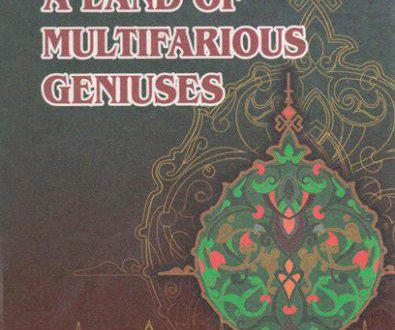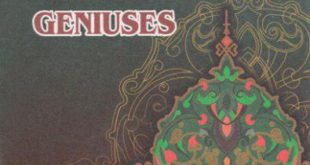Most mediaeval historians who left information about al-Isfahani characterized him as “the author of most interpretations”. The investigator Nazar Muhammad al-Faryabi points out that he was the author of more than twenty books and presents their titles name by name. More than half of these books are devoted to the interpretation of Hadiths and different branches of this science. Among them we can mention the titles of those books as “Hadith”, “Al-Amali”, “Al-Favaid”, “Ma’rifat as-Sahaba”, “Fath al-bob fi kuna va-1-alqab”, “Shurut al-aimma”, “Kitab at-Tarikh”, “Kitab asmai as-Sahaba”, etc. Some of his books as “Kitabu-r-rad a’la-1 jahmiyyin”, “Kitab as-sifat”, “Kitab an-nafs va r-ruh” and “An-Nasikh va-l-mansukh” were devoted to the study of the Islamic rules of behaviour. Is’haq ibn Manda al-Isfahani died in 395/1005 in Isfahan and was buried in Dukkabaz cemetery. The author’s book titled “Names of Imam al-Bukhari’s teachers” is a small one that consists of only sixteen pages (written on Naskh script) each including seventeen lines. It was copied out by a scribe from Baghdad whose name was Muhammad ibn al-Hasan ibn Muhammad Ali ibn al-Ibrahim on Friday, on the 19th day of the month Shawal in 632 A.H. in the Jome’ Mosque of the city of Damascus. From the scientific point of view, it serves as one of the most valuable sources. This book contains 306 names and titles of the roviys of Hadiths taken fully from Imam al-Bukhari’s famous book “Sahih al-Bukhari” and presented in an alphabetical order. Most of the roviys included in this book are presented with their full names, titles, dates and places of birth and death. As the proof of this information, we may present some interesting facts about them:
- Ayub ibn Sulayman ibn Bilal Mavli Abdullah, ibn Abi Atiyq, originally from the city of Medina. In accord with the Muslim calendar died in 224 A.H.;
- Ibrahim ibn Hamza ibn Muhammad ibn Abdullah az-Zubayr ibn al-Avan az-Zubayri (he was also called Abu Is’haq). Died in 230 A.H. in Medina;
- Ahmad ibn Is’haq ibn al-Husain, Abu Is’haq as-Sullami. He was also known by name as-Surmari and was from a village of Bukhara;
- Ahmad ibn Abu Raja, his real name was Abdullah ibn Ayub, al-Haravi Abu al-Valiyd. Imam al-Bukhari used to copy his Hadiths when he lived in Bukhara;
- Ahmad ibn Mani ibn Abdurrahman, Abu Ja’far al-Baghavi. He lived in Baghdad and used to cite Hadiths from Husain. He was also known by name al-Qabbani. Imam al-Bukhari cited from him only one Hadith;
- Abdullah ibn az-Zubayr ibn Isa al-Humaydi, also known as Abu Bakr. He was from Mecca and died in 219 A.H.;
- Muhammad ibn Yusuf Abu Ahmad al-Bukhari. He was
from Paykand.”
In this way, the author presented information about the 306 original roviys of Hadiths from whom Imam al-Bukhari had cited.
This amount is, of course, a piece of information about more than a thousand roviys from whom he had heard and cited Hadiths.
In the science of Hadiths there is a branch that studies the misunderstandings and misconducts in the meaning and interpretation of Hadiths. It is rather difficult and the most responsible part of the work in the choice and classification of Hadiths. A specialist in Hadiths should be able not only understand the meaning and interpretation of the Hadith he has chosen but also have knowledge about the roviys of the Hadith from whom he cited it, their birthplaces and dates of births and deaths. Therefore, the experts of Hadiths are highly estimated if they own such necessaiy information. At those times, a few specialists such as Ali ibn al-Madini, Yaqub ibn Shayba, Ahmad ibn Hanbal, al-Bukhari, Abu Hatam, Abu Zur’a, ad-Daraqutni and some of their followers were the most estimated experts in the field of Hadiths who had the right to express their own viewpoints concerning the origin and the author of the Hadith. Citing the words of Ali ibn al-Madiyni in this matter, we can believe that defining the erroneous Hadiths is not an easy thing: “It is easier to write down twenty Hadiths which I haven’t known before than find out the misconduct of erroneous Hadith with a wrong idea”. It is really a difficult task to find out the main idea and the purpose of the Hadith, to define its appointment and its connection between roviys and the point of misconduct in the meaning and interpretation of the Hadith.
Those specialists in the field of Hadith science who did not have such abilities, of course, could not be successful in their endeavours. Thus, we can state surely that al-Bukhari had a rare ability to cope with such a responsible task. Imam al-Bukhari’s contemporary, a well-known scientist Al-Hafiz Ahmad ibn Hamdun remembers him in the following way: “During the burial ceremony of Usman ibn Abu Sa’id ibn Marvan, when Muhammad ibn Yahya az-Zuhli asked al-Bukhari a question about misunderstood Hadiths and their roviys, I heard Al-Bukhari answering his question so easily and correctly as if he had been reading the Quranic verse “qui huva Allahu ahad… .”
It is to be noted that at that time, i.e. in the 9th century, Nishapur was one of the flourishing scientific and cultural centres of the East, and such famous experts of Hadiths as Imam al-Bukhari, Imam Muslim ibn al-Hajjaj, Imam at-Termizi, etc. were living in this city. They used to deliver lessons to the students at the central madrasahs. Lots of scientific and controversial disputes and discussions were held in their lessons and other gatherings.
Experts of the science of Hadiths were always astonished at the ability of al-Bukhari, especially his amazing ability to find out and define the nature of the Hadith in case it was one of the erroneous ones. Experts had to acknowledge his ability unanimously. Imam al-Bukhari used to attend public places as mosques and madrasahs and scientific councils. Once a famous expert of that time Muslim ibn al-Hajjaj acknowledged his knowledge and said openheartedly: “Only envious people may hate you. I am sure that there is no one in the world who can be equalled to you”.
A number of experts in the science of Hadiths left their sayings and original opinions about the amazing ability of Imam al-Bukhari to define the nature and interpret the meaning of erroneous Hadiths. Imam at-Termizi, who wrote a special book “Kitab al-ilal” concerning erroneous Hadiths, acknowledged the following: “My ideas concerning Hadiths, their roviys and erroneous facts about them are mostly taken from Imam al-Bukhari’s book “Kitab at-Tarikh” and fewer of them are taken from Abdullah ibn Abdurrahman and Abu Zura’s works, but most of them are originated from Imam al-Bukhari’s book, and from scientific conversations and talks with him”. And he also added: “I have never met a single expert in the field of defining erroneous Hadiths and the chain of roviys of Hadiths prior to Imam al-Bukhari”.
Ubaydulla Uvatov Professor, Doctor of History
Press service of ISRCIB
 Imom Buxoriy xalqaro ilmiy-tadqiqot markazi bukhari.uz
Imom Buxoriy xalqaro ilmiy-tadqiqot markazi bukhari.uz










